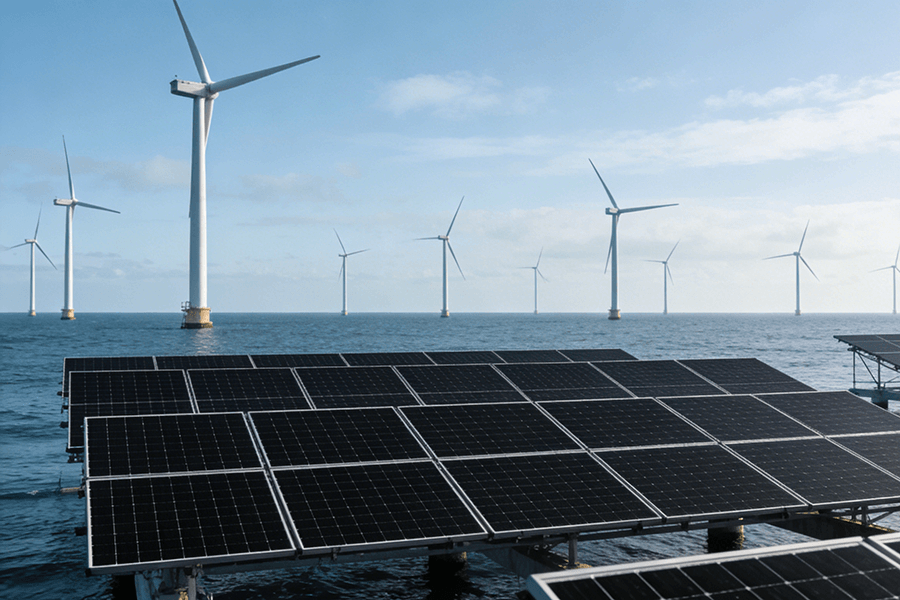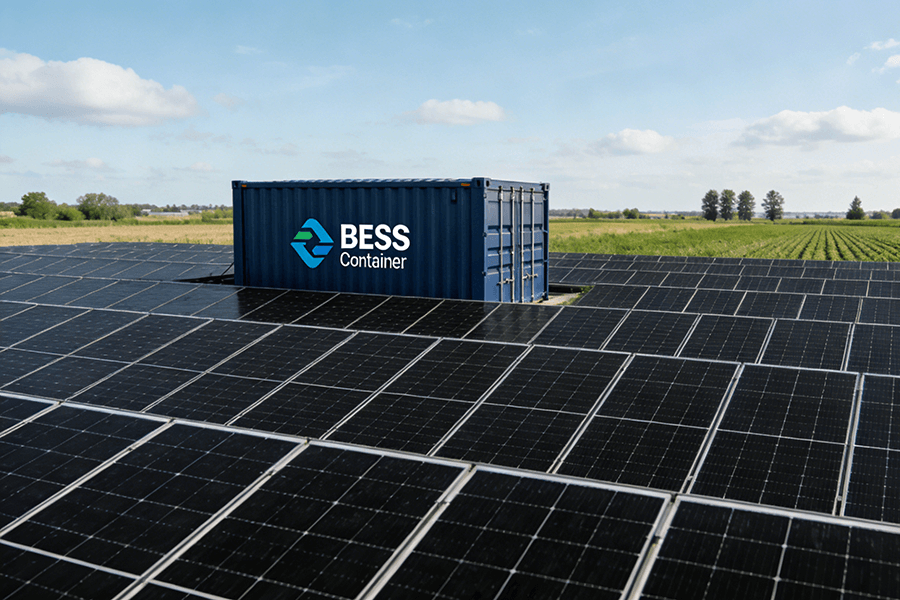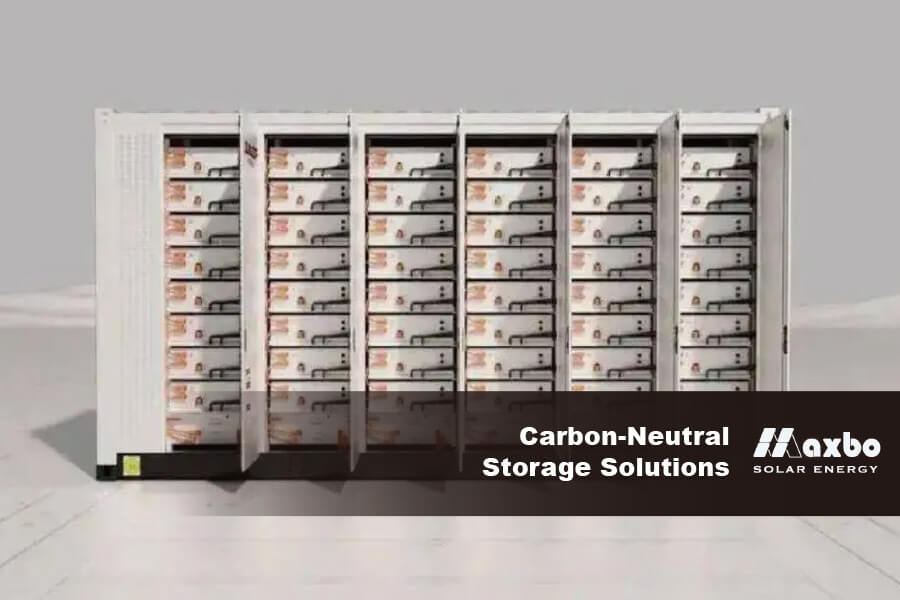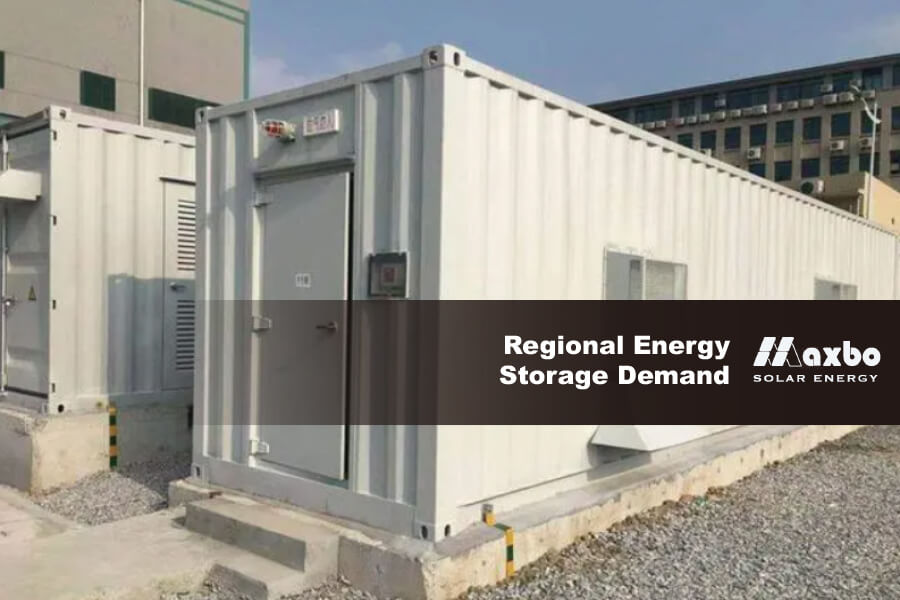All-in-One Energy Storage System: 7 Essential Features to Maximize Your Energy Efficiency
In today’s energy-driven world, businesses and homeowners alike are seeking efficient solutions to manage their energy needs. An all-in-one energy storage system is a comprehensive solution designed to integrate various components into a single, cohesive unit. This article explores the top seven essential features of all-in-one energy storage systems, detailing their components, functions, and how they contribute to maximizing energy efficiency. Discover why Maxbo Solar’s all-in-one systems are your best choice for optimizing energy use and achieving long-term savings.
Table of Contents
ToggleWhat is an All-in-One Energy Storage System?
An all-in-one energy storage system is a compact, integrated solution that combines multiple energy management components into a single unit. This system typically includes energy storage batteries, an inverter, a management system, and additional features such as monitoring and control interfaces. The goal of these systems is to simplify energy management while providing efficient and reliable energy storage and usage.
Benefits of All-in-One Energy Storage Systems:
- Simplified Installation: All-in-one energy storage systems reduce installation complexity by combining components into a single unit.
- Cost-Effective: Integrated solutions can be more affordable than purchasing and installing separate components.
- Enhanced Performance: Streamlined design improves overall system efficiency and reliability.
Reference:
- International Energy Agency (IEA). (2022). “Energy Storage: The Key to Clean Energy.” Retrieved from IEA
Key Features of an All-in-One Energy Storage System
An all-in-one energy storage system consists of several key components, each serving a specific function. Below, we outline these components in detail, explaining their roles and how they work together to optimize energy management.
1. Energy Storage Batteries
Function: The primary function of energy storage batteries is to store electrical energy for later use. These batteries can be of various types, including lithium-ion, lead-acid, or flow batteries.
Specifications:
- Capacity: Typically measured in kilowatt-hours (kWh). Common capacities range from 5 kWh to 20 kWh for residential systems and higher for commercial systems.
- Cycle Life: Indicates the number of charge-discharge cycles the battery can undergo before its capacity significantly degrades.
- Efficiency: Refers to the ratio of energy output to energy input, typically expressed as a percentage.
Example: Maxbo Solar’s all-in-one systems use high-capacity lithium-ion batteries known for their long cycle life and high efficiency.
Reference:
- Journal of Power Sources. (2021). “Advancements in Lithium-Ion Battery Technology for Energy Storage.” Retrieved from Elsevier
2. Inverter
Function: The inverter converts direct current (DC) from the batteries into alternating current (AC) used by most home and business appliances. It is a crucial component for ensuring that stored energy can be used effectively.
Specifications:
- Power Rating: Measured in kilowatts (kW), indicating the maximum power the inverter can handle.
- Efficiency: The efficiency of the inverter impacts overall system performance. High-efficiency inverters typically exceed 95%.
- Type: Inverters can be string inverters, microinverters, or hybrid inverters depending on the system design.
Example: Maxbo Solar offers high-efficiency hybrid inverters that can seamlessly integrate with both solar panels and energy storage systems.
Reference:
- IEEE Transactions on Power Electronics. (2022). “High-Efficiency Inverter Technologies for Renewable Energy Systems.” Retrieved from IEEE Xplore
3. Energy Management System (EMS)
Function: The EMS manages the overall operation of the energy storage system, optimizing energy usage based on real-time data and user preferences. It controls when energy is stored, used, or exported.
Specifications:
- Control Algorithms: Advanced algorithms ensure efficient energy usage and integration with renewable energy sources.
- User Interface: Provides users with control and monitoring capabilities, often through a mobile app or web interface.
- Integration: Compatible with various energy sources and can adjust settings based on weather conditions and energy prices.
Example: Maxbo Solar’s EMS includes a user-friendly interface that allows for remote monitoring and control, enhancing user experience and system efficiency.
Reference:
- Energy Reports. (2023). “The Role of Energy Management Systems in Modern Energy Storage Solutions.” Retrieved from Elsevier
4. Monitoring and Control Interface
Function: This interface provides real-time data on system performance, including battery status, energy usage, and system health. It allows users to monitor and adjust system settings as needed.
Specifications:
- Real-Time Monitoring: Displays current data on energy production, consumption, and storage levels.
- Alerts and Notifications: Provides notifications for system issues or maintenance needs.
- Remote Access: Allows users to access system data and control settings from remote locations.
Example: Maxbo Solar’s all-in-one systems feature a comprehensive monitoring interface that delivers real-time insights and alerts to ensure optimal performance.
Reference:
- Renewable Energy. (2022). “Advanced Monitoring Systems for Energy Storage: Enhancements and Innovations.” Retrieved from ScienceDirect
5. Safety Features
Function: Safety features are critical for protecting both the system and users. They include safeguards against electrical faults, thermal management, and physical protection.
Specifications:
- Overcharge Protection: Prevents battery overcharging, which can lead to overheating and potential damage.
- Thermal Management: Ensures that batteries and other components operate within safe temperature ranges.
- Physical Enclosures: Provides protection against environmental factors and physical damage.
Example: Maxbo Solar integrates robust safety mechanisms into their all-in-one systems to ensure reliability and user safety.
Reference:
- Journal of Energy Storage. (2021). “Safety Considerations in Energy Storage Systems.” Retrieved from Elsevier
6. Integration with Renewable Energy Sources
Function: Many all-in-one energy storage systems are designed to work seamlessly with renewable energy sources, such as solar panels or wind turbines. This integration enhances the efficiency and sustainability of energy management.
Specifications:
- Compatibility: Must be compatible with the specific type of renewable energy source being used.
- Charge Control: Manages the charging of batteries from renewable sources to optimize energy use.
- Grid Interaction: Facilitates interaction with the electrical grid, allowing for energy export and import.
Example: Maxbo Solar’s systems are designed to integrate smoothly with solar panels, providing a comprehensive solution for renewable energy storage and management.
Reference:
- Renewable and Sustainable Energy Reviews. (2022). “Integration of Energy Storage Systems with Renewable Energy Sources.” Retrieved from ScienceDirect
7. Scalability and Expandability
Function: Scalability allows users to increase their energy storage capacity as their needs grow. Expandability ensures that additional components or systems can be added in the future.
Specifications:
- Modular Design: Allows for the addition of extra batteries or components without significant modifications.
- Upgradable Software: Enables updates to the system’s software for improved functionality and compatibility.
- Flexible Configuration: Supports various configurations to meet changing energy requirements.
Example: Maxbo Solar offers scalable all-in-one systems that can be expanded as needed, providing flexibility for future growth.
Reference:
- Energy. (2023). “Scalability and Flexibility in Modern Energy Storage Systems.” Retrieved from ScienceDirect
Pricing and Cost Considerations
The cost of an all-in-one energy storage system can vary widely based on its capacity, features, and installation requirements. Here is a general estimate:
- Basic Residential Systems: $7,000 – $15,000
- Advanced Systems with High Capacity: $15,000 – $30,000
- Installation and Integration Costs: $2,000 – $5,000
Total Estimated Cost: $9,000 – $35,000
Reference:
- BloombergNEF. (2023). “Cost Trends in All-in-One Energy Storage Systems.” Retrieved from BloombergNEF
Maxbo Solar’s All-in-One Energy Storage Solutions
Maxbo Solar is committed to providing high-quality all-in-one energy storage systems that combine efficiency, reliability, and cost-effectiveness. Our systems include:
- High-Capacity Batteries: Efficient and long-lasting battery solutions.
- Advanced Inverters: High-efficiency inverters for optimal energy conversion.
- Comprehensive Management Systems: User-friendly interfaces and advanced control features.
Customization and Support: We offer personalized consultations to tailor systems to your specific needs and provide ongoing support for installation and maintenance.
Cost-Effective Solutions: Our competitive pricing and transparent cost estimates, along with available incentives and rebates, make your investment more affordable.
For more information and to explore our all-in-one energy storage solutions, visit Maxbo Solar.
Conclusion
All-in-one energy storage systems offer a streamlined solution for managing energy needs efficiently. By understanding their key features and benefits, you can make an informed decision that enhances your energy efficiency and reduces long-term costs.
Maxbo Solar’s all-in-one energy storage solutions provide the perfect blend of performance, reliability, and value. Contact us today to learn how our systems can meet your energy management needs.
References:
- International Energy Agency (IEA). (2022). “Energy Storage: The Key to Clean Energy.” Retrieved from IEA
- Journal of Power Sources. (2021). “Advancements in Lithium-Ion Battery Technology for Energy Storage.” Retrieved from Elsevier
- IEEE Transactions on Power Electronics. (2022). “High-Efficiency Inverter Technologies for Renewable Energy Systems.” Retrieved from IEEE Xplore
- Energy Reports. (2023). “The Role of Energy Management Systems in Modern Energy Storage Solutions.” Retrieved from Elsevier
- Journal of Energy Storage. (2021). “Safety Considerations in Energy Storage Systems.” Retrieved from Elsevier
- Renewable and Sustainable Energy Reviews. (2022). “Integration of Energy Storage Systems with Renewable Energy Sources.” Retrieved from ScienceDirect
- Energy. (2023). “Scalability and Flexibility in Modern Energy Storage Systems.” Retrieved from ScienceDirect
- BloombergNEF. (2023). “Cost Trends in All-in-One Energy Storage Systems.” Retrieved from BloombergNEF
Maxbo Solar is here to provide you with the best all-in-one energy storage solutions to meet your needs. Contact us today to get started!
Related Solutions
Related Blogs
Offshore Wind BESS Container Europe: Slash Curtailment, Smooth Grids, and Boost Profits for Your Wind Farm
行政2025-12-19T14:09:10+08:00December 18th, 2025|Categories: Design, News|
Agri-PV BESS Container EU: Unlock 1.04GW EU Subsidy & Double Farm Profits by 2026
行政2025-12-19T14:12:15+08:00December 18th, 2025|Categories: Design, News|
Let’s Make Things Happen
Add notice about your Privacy Policy here.
Let’s Make Things Happen
”The Maxbo team of sales consultants will continue to enrich our own expertise and experience to empower the development of sustainable energy with rigor.“
Maxbo CEO
You will need to provide: 1. the amount of electricity used. 2. the type and power of the load. 3. the electricity consumption habits (daytime/nighttime consumption). 4. the need to store electricity. 5. the need to feed electricity to the mains. 6. drawings or address of the installation site. 7. other special requirements
We can provide you with a quotation, a specification for all products, a circuit connection diagram and a diagram of the installation and placement of the PV panels. Any other requirements and adjustments needed can be discussed with our team.
We can meet the needs of most scenarios, whether your application is for domestic, commercial and industrial use, in remote areas, or for grid-level energy storage, we have experienced colleagues to design and deliver the right solution.
Add notice about your Privacy Policy here.
How much solar power do I need?
Most homes need 5–12kW, depending on your energy use and location.
Off-grid vs. grid-tied — what’s the difference?
Off-grid works without the utility grid; grid-tied lets you sell extra power back.
Do I need permits?
Usually yes — check local rules or ask us for guidance.
How long does a battery last?
Depends on size and load. A 5kWh battery can power a fridge for about 40 hours.
Can I upgrade my system later?
Yes, our systems are modular and easy to expand.
Does Maxbo offer installation?
We ship globally and connect customers with trusted local installers.






